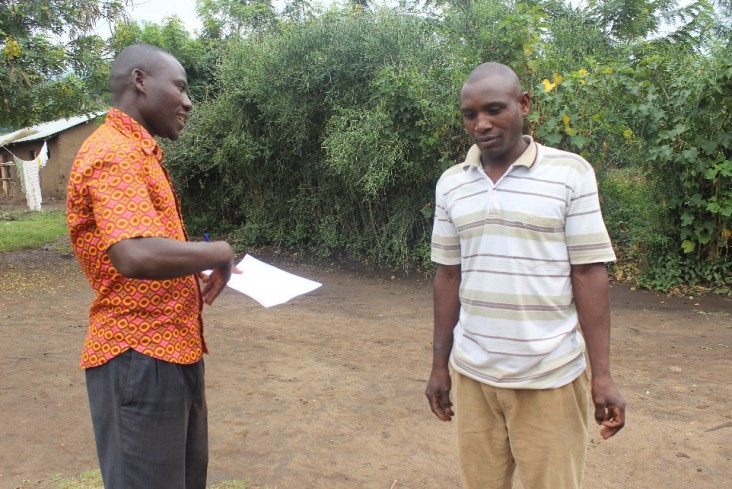Speeches Shim

July 2018 — Ernest Masereka, a voluntary community health worker from Rutoke village in Uganda, understands the benefits of open dialogue. He first introduced his community to the idea of forming a village health club in December 2017.
Village health clubs provide forums where community members can disseminate important messages and address issues, such as sanitation, health and savings. Collectively, members of the club come up with action plans and provide local solutions for the challenges their community faces.
Club members, Masereka suggested, could also contribute 1,000 Ugandan shillings (about 25 cents) every month for the community to use, when needed, to address health issues. The community welcomed this idea and, in January 2018, formed a village health club. Members then began contributing to what they referred to as the “ambulance fund.”
Since 2016, USAID’s Malaria Action Program for Districts has worked with key influencers like Masereka to reduce the malaria burden in Uganda. The role of a key influencer is to inform their community about the dangers of malaria, the importance of seeking treatment within 24 hours of the onset of symptoms, and preventive practices. This is done through monthly home visits and the establishment of village health clubs, a practice introduced by the program to promote community dialogues.
Malaria remains a persistent problem in Uganda and is the country’s leading cause of death, particularly in children under 5. This program is just one way that USAID and and its U.K. counterpart — the Department for International Development — are working together to reduce malaria deaths to near zero by 2020.
In September 2017, the program, implemented by the Malaria Consortium, identified and trained 32 key influencers in malaria prevention, treatment and interpersonal communication. Each attendee was asked to then establish a village health club. The program is being implemented in 43 districts in the Central, Western and West Nile regions of Uganda.
Thanks to Masereka’s encouragement, his community’s village health club is succeeding. When the son of one village health club member, Bagonza*, got sick in May 2018, the boy was taken to a nearby health center where he was diagnosed with malaria and received treatment. However, his condition became worse after a week and he was referred to St. Paul’s hospital, 10 kilometers away from his home in Kasese town.
Bagonza did not have enough money for treatment, so he spoke with officials of the health club in his village and borrowed 40,000 Ugandan shillings ($11.) With this money, Bagonza took his son to the hospital and bought foodstuffs for the family. The transaction was officially communicated to the village health club members at the next meeting, and a repayment schedule was established for Bagonza to replenish the ambulance fund.
“My child is very well now and is back at school,” said Bagonza. “Recently, the government gave us nets, and we now sleep under a mosquito net. I also know even more nets are being distributed at the facilities to pregnant mothers. We are lucky that our village was chosen [for this program].”
The USAID program plans to increase the number of key influencers in the Kasese district from four to 10 to extend its reach in promoting behavior change and reduce the malaria burden in the district. Since key influencers and community members account for the success of village health clubs, this will ensure the sustainability of the program’s impact even after it ends.
USAID’s Malaria Action Program for Districts, which runs from 2016 to 2021, aims to improve the health status of the Ugandan population by reducing childhood and maternal morbidity and mortality due to malaria. The program, supported by the U.S. President’s Malaria Initiative, focuses on children under 5 and pregnant women. It is made possible by generous support from the American and British people, and is implemented in partnership with Jhpiego, Banyan Global, Communication for Development Foundation Uganda, Deloitte Uganda and the Infectious Diseases Institute.
The program works alongside the National Malaria Control Program and the district health management team. By 2021, the program estimates it will reach 13 million Ugandans. In February and March 2017 alone, the program distributed 1 million long-lasting insecticidal nets to nearly 2 million people in three districts in Uganda.
*Full name not available.
LINKS
Follow @USAIDEastAfrica, on Facebook, on YouTube

Comment
Make a general inquiry or suggest an improvement.